Entry Database : PDB / ID : 1gmiTitle Structure of the c2 domain from novel protein kinase C epsilon PROTEIN KINASE C, EPSILON TYPE Keywords / / / / Function / homology Function Domain/homology Component
/ / / / / / / / / / / / / / / / / / / / / / / / / / / / / / / / / / / / / / / / / / / / / / / / / / / / / / / / / / / / / / / / / / / / / / / / / / / / / / / / / / / / / / / / / / / / / / / / / / / / / / / / / / / / / / / / / / / / / / / / / / / / / / Biological species RATTUS RATTUS (black rat)Method / / / Resolution : 1.7 Å Authors Ochoa, W.F. / Garcia-Garcia, J. / Fita, I. / Corbalan-Garcia, S. / Verdaguer, N. / Gomez-Fernandez, J.C. Journal : J.Mol.Biol. / Year : 2001Title : Structure of the C2 Domain from Novel Protein Kinase Cepsilon. A Membrane Binding Model for Ca(2+ )-Independent C2 DomainsAuthors : Ochoa, W.F. / Garcia-Garcia, J. / Fita, I. / Corbalan-Garcia, S. / Verdaguer, N. / Gomez-Fernandez, J.C. History Deposition Sep 14, 2001 Deposition site / Processing site Revision 1.0 Oct 25, 2001 Provider / Type Revision 1.1 May 8, 2011 Group Revision 1.2 Jul 13, 2011 Group Revision 1.3 May 8, 2024 Group Data collection / Database references ... Data collection / Database references / Derived calculations / Other Category chem_comp_atom / chem_comp_bond ... chem_comp_atom / chem_comp_bond / database_2 / pdbx_database_status / pdbx_struct_conn_angle / struct_conn Item _database_2.pdbx_DOI / _database_2.pdbx_database_accession ... _database_2.pdbx_DOI / _database_2.pdbx_database_accession / _pdbx_database_status.status_code_sf / _pdbx_struct_conn_angle.ptnr1_auth_comp_id / _pdbx_struct_conn_angle.ptnr1_auth_seq_id / _pdbx_struct_conn_angle.ptnr1_label_asym_id / _pdbx_struct_conn_angle.ptnr1_label_atom_id / _pdbx_struct_conn_angle.ptnr1_label_comp_id / _pdbx_struct_conn_angle.ptnr1_label_seq_id / _pdbx_struct_conn_angle.ptnr3_auth_comp_id / _pdbx_struct_conn_angle.ptnr3_auth_seq_id / _pdbx_struct_conn_angle.ptnr3_label_asym_id / _pdbx_struct_conn_angle.ptnr3_label_atom_id / _pdbx_struct_conn_angle.ptnr3_label_comp_id / _pdbx_struct_conn_angle.ptnr3_label_seq_id / _pdbx_struct_conn_angle.value / _struct_conn.pdbx_dist_value / _struct_conn.ptnr1_auth_comp_id / _struct_conn.ptnr1_auth_seq_id / _struct_conn.ptnr1_label_asym_id / _struct_conn.ptnr1_label_atom_id / _struct_conn.ptnr1_label_comp_id / _struct_conn.ptnr1_label_seq_id / _struct_conn.ptnr1_symmetry / _struct_conn.ptnr2_auth_comp_id / _struct_conn.ptnr2_auth_seq_id / _struct_conn.ptnr2_label_asym_id / _struct_conn.ptnr2_label_atom_id / _struct_conn.ptnr2_label_comp_id / _struct_conn.ptnr2_label_seq_id / _struct_conn.ptnr2_symmetry
Show all Show less
 Open data
Open data Basic information
Basic information Components
Components Keywords
Keywords Function and homology information
Function and homology information
 X-RAY DIFFRACTION /
X-RAY DIFFRACTION /  SYNCHROTRON /
SYNCHROTRON /  MIR / Resolution: 1.7 Å
MIR / Resolution: 1.7 Å  Authors
Authors Citation
Citation Journal: J.Mol.Biol. / Year: 2001
Journal: J.Mol.Biol. / Year: 2001 Structure visualization
Structure visualization Molmil
Molmil Jmol/JSmol
Jmol/JSmol Downloads & links
Downloads & links Download
Download 1gmi.cif.gz
1gmi.cif.gz PDBx/mmCIF format
PDBx/mmCIF format pdb1gmi.ent.gz
pdb1gmi.ent.gz PDB format
PDB format 1gmi.json.gz
1gmi.json.gz PDBx/mmJSON format
PDBx/mmJSON format Other downloads
Other downloads 1gmi_validation.pdf.gz
1gmi_validation.pdf.gz wwPDB validaton report
wwPDB validaton report 1gmi_full_validation.pdf.gz
1gmi_full_validation.pdf.gz 1gmi_validation.xml.gz
1gmi_validation.xml.gz 1gmi_validation.cif.gz
1gmi_validation.cif.gz https://data.pdbj.org/pub/pdb/validation_reports/gm/1gmi
https://data.pdbj.org/pub/pdb/validation_reports/gm/1gmi ftp://data.pdbj.org/pub/pdb/validation_reports/gm/1gmi
ftp://data.pdbj.org/pub/pdb/validation_reports/gm/1gmi Links
Links Assembly
Assembly
 Components
Components

 X-RAY DIFFRACTION / Number of used crystals: 1
X-RAY DIFFRACTION / Number of used crystals: 1  Sample preparation
Sample preparation SYNCHROTRON / Site:
SYNCHROTRON / Site:  ESRF
ESRF  / Beamline: ID14-2 / Wavelength: 0.993
/ Beamline: ID14-2 / Wavelength: 0.993  Processing
Processing MIR / Resolution: 1.7→20 Å / Cross valid method: 15661 / σ(F): 0
MIR / Resolution: 1.7→20 Å / Cross valid method: 15661 / σ(F): 0  Movie
Movie Controller
Controller




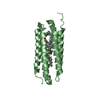


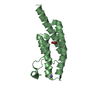
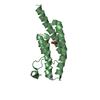
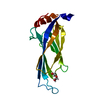
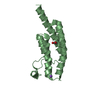

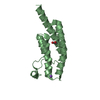
 PDBj
PDBj









